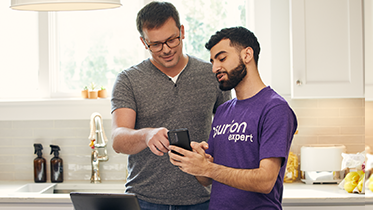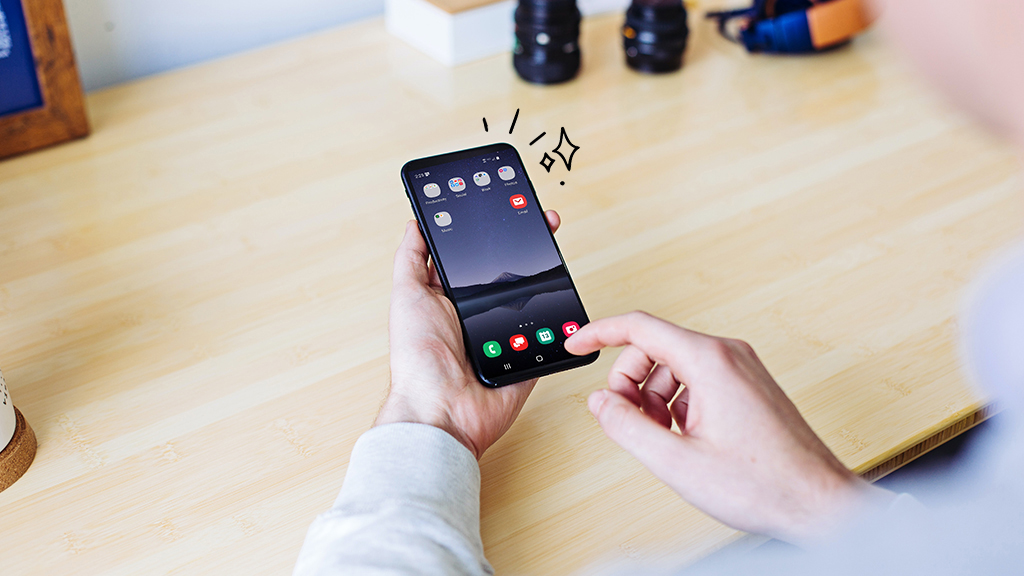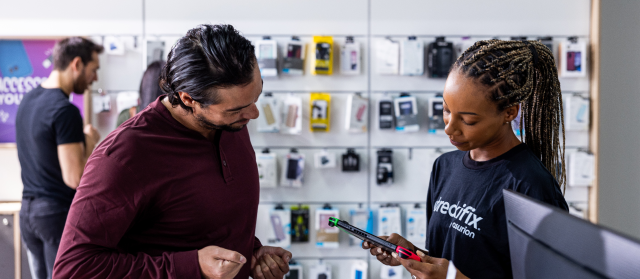Chargers keep the devices that run our world running all day. But if you've noticed that your MacBook Air® or MacBook Pro® laptop battery won't fully charge (or charge at all) or that your computer shuts down quickly after getting a full charge, you may have a broken or faulty charger.
Here at Asurion, we find and fix tech issues, fast. Our experts can help no matter what the problem is—backing up your phone, fixing common Amazon Fire® issues, or showing you how to safely use public Wi-Fi. Here are their tips for troubleshooting a broken MacBook® charger.
NOTE: The steps provided in this guide apply to recent models of the MacBook Pro and MacBook Air laptop and their corresponding charging units.
Check your power
There are a few ways to check that your power source is working properly.
Make sure it's plugged in
It may seem obvious, but are you sure your charger is plugged in? This mistake happens more than you'd think. If your MacBook battery is not fully charging, make sure that the port and charger are free of debris and are able to get a solid, uninterrupted connection.
Check the power outlet
Make sure that your power source is connected to a working outlet, then follow these steps:
- Unplug your laptop power adapter from the outlet and plug in another device that you know works well, like a clock or lamp. If your device powers on, you know that the power outlet is working.
- Reconnect the power adapter to your laptop and see if it charges. If it does, you're all set.
- If it doesn't, shut down your MacBook, close it for 30 seconds, then open it up again and try to charge your computer.
If your charger still isn't working, check that it isn't plugged into an outlet controlled by a switch that's been turned off.

You can’t work when your computer doesn’t want to
Get it repaired fast at one of our stores. Just stop in or make an appointment⎯we'll handle the rest.
Check for line noise problems
Unplug your power adapter from the wall and wait 1 minute, then plug it back in. If your adapter works again, you may have a line noise issue with the power source. This occurs when the adapter's over-voltage protection feature senses ground noise, triggering it to turn off.
To resolve the issue, occasionally repeat this process: Unplug the power adapter, wait 1 minute, then plug it back in. Or simply plug your adapter into a different circuit. If you continue to have issues, contact an Asurion Expert for help.
Inspect your charger for physical damage
Checking your charger for physical problems will help you rule out whether wire damage is the cause of your MacBook charging troubles. Here's what to look for:
- Bent or damaged pins
- Frayed or exposed wires, often found just below the head of the charger (where it receives the most strain)
- LED charging indicator light not working
If you discover any of these issues, it's time to get a new MacBook charger.
Update your software
Updating your macOS® is imperative to the health of your MacBook, including your charger—an update might fix whatever is causing your MacBook's charge to act funky. So before buying a new charger or laptop, run a quick update. Here's how:
- Back up your Mac® before doing a software update.
- In the Apple® menu in the corner of your screen, select System Preferences > Software Update.
- Click Update Now or Upgrade Now.
- Update Now installs the latest updates for your current macOS version, such as an update from Big Sur 11.5 to 11.6.
- Upgrade Now installs a new major version with a new name, such as going from macOS Big Sur to Monterey. You'll only find upgrades that are compatible with your Mac in Software Update.
As soon as your Mac is updated, macOS and all the apps it installs will be up to date, too.
See if your adapter is overheating
Power adapters get warm during everyday use, which is why it's important to keep them in a well-ventilated area. If you're working in bed or under blankets on the couch, your adapter can overheat, causing your charger to shut off (just like your phone does if it sits in the sun too long).
To prevent your adapter from overheating, make sure that your charger isn't tucked into a poorly ventilated space with limited airflow, like under bedding, couch cushions, or pillows.
If you suspect an overheating adapter has caused your charging problem, follow these steps:
- Disconnect the charger from your laptop and let it fully cool down before attempting to use it again.
- Plug it in as usual, making sure it's on a hard, flat surface with access to good airflow.
- If your MacBook's charge light indicates it's charging, you've resolved the problem. For this first charge, we recommend shutting off your device and letting it refill the battery completely before using it again.
Look into your battery health
If you've checked all the possible causes and still haven't found the culprit, your MacBook battery—not your charger—may be the problem. All batteries degrade with time, and eventually the battery in your device will need to be serviced or even replaced. Here's how to check and see if your battery has reached this stage.
How to check the health of your MacBook's battery
- From the Apple menu, go to System Preferences > Battery.
- Select Battery in the sidebar, then click Battery Health.
From there, you'll see one of the following status indicators:
- Normal, which means your battery is functioning normally.
- Service recommended, which means your battery's ability to hold a charge is less than when it was new, or it isn't functioning properly. That said, you can continue to use your Mac but should take it to an expert who can evaluate your battery. An Asurion Expert can help you, fast.
Nothing ruins productivity like a laptop breakdown
With an Asurion Home+® protection plan, you can keep your downtime to a minimum. This one simple plan covers thousands of eligible devices in your home from mechanical and electrical breakdowns, normal wear and tear, and more—from laptops, TVs and tablets to smart thermostats and locks—plus provides 24/7 live support from trusted experts for your tech questions. Learn more about an Asurion Home+ laptop warranty and how you can get peace-of-mind electronics protection.





